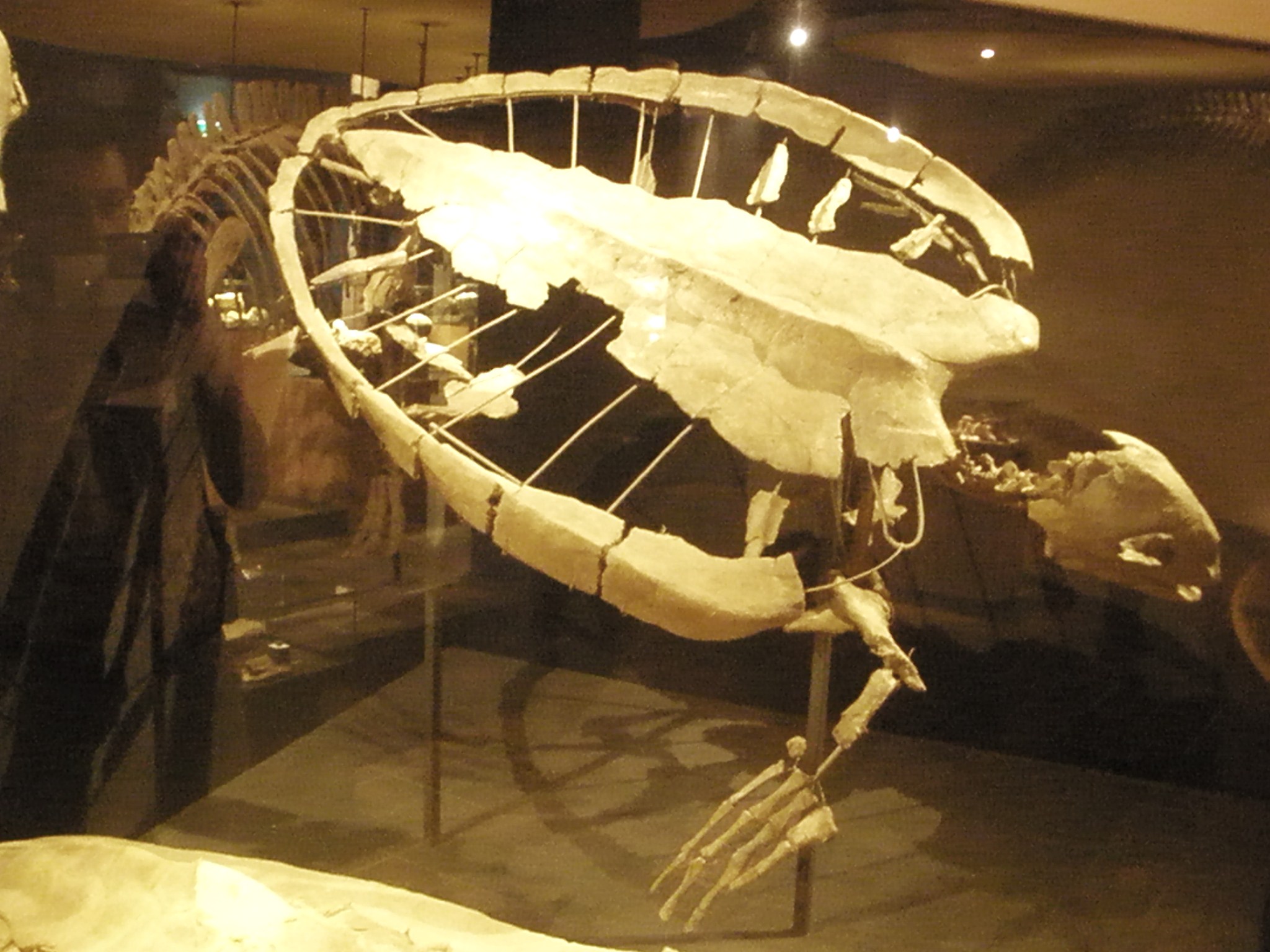Allopleuron on:
[Wikipedia]
[Google]
[Amazon]
''Allopleuron'' (meaning "other side") is a genus of extinct
 ''Allopleuron'' lived from the
''Allopleuron'' lived from the
sea turtle
Sea turtles (superfamily Chelonioidea), sometimes called marine turtles, are reptiles of the order Testudines and of the suborder Cryptodira. The seven existing species of sea turtles are the flatback, green, hawksbill, leatherback, loggerh ...
, which measured long in life. The type species
In International_Code_of_Zoological_Nomenclature, zoological nomenclature, a type species (''species typica'') is the species name with which the name of a genus or subgenus is considered to be permanently taxonomically associated, i.e., the spe ...
is ''Allopleuron hofmanni''. It is a basal member of the clade Pancheloniidae, closely related to '' Protosphargis''. Similar to ''Protosphargis'', it was characterized by shell reduction.
Fossil history
 ''Allopleuron'' lived from the
''Allopleuron'' lived from the Late Cretaceous
The Late Cretaceous (100.5–66 Ma) is the more recent of two epochs into which the Cretaceous Period is divided in the geologic time scale. Rock strata from this epoch form the Upper Cretaceous Series. The Cretaceous is named after ''cre ...
(Cenomanian
The Cenomanian is, in the International Commission on Stratigraphy's (ICS) geological timescale, the oldest or earliest age (geology), age of the Late Cretaceous epoch (geology), Epoch or the lowest stage (stratigraphy), stage of the Upper Cretace ...
age, 94.3 Ma) to the Oligocene
The Oligocene ( ) is a geologic epoch (geology), epoch of the Paleogene Geologic time scale, Period that extends from about 33.9 million to 23 million years before the present ( to ). As with other older geologic periods, the rock beds that defin ...
(Rupelian
The Rupelian is, in the geologic timescale, the older of two age (geology), ages or the lower of two stage (stratigraphy), stages of the Oligocene epoch (geology), Epoch/series (stratigraphy), Series. It spans the time between . It is preceded b ...
age, 28.4 Ma), therefore surviving the Cretaceous-Paleogene extinction event. Fossils have been found from Germany, the Netherlands, Kazakhstan and the United States.
Life history
''Allopleuron'' was believed to have used theLaurasia
Laurasia () was the more northern of two large landmasses that formed part of the Pangaea supercontinent from around ( Mya), the other being Gondwana. It separated from Gondwana (beginning in the late Triassic period) during the breakup of Pa ...
n-Holarctic
The Holarctic realm is a biogeographic realm that comprises the majority of habitats found throughout the continents in the Northern Hemisphere. It corresponds to the floristic Boreal Kingdom. It includes both the Nearctic zoogeographical reg ...
southern continental shelf as a breeding area. The modern day location of the breeding ground is along the coast of Asia. ''Allopleuron'' is believed to have eaten jellyfish, seaweed, or carcasses; ''A. hofmanni'' δ13C values indicate a carnivorous diet. It is believed that adult male ''Allopleuron'' lived off the coast of southeast Netherlands, and northeast Belgium due to the large amount of fossils in these areas. The area is believed to have been a sea grass meadow that was able to sustain the large population. The lack of remains from juvenile ''Allopleuron'' indicate that the young of the species lived elsewhere.
Phylogeny
Evers et al. (2019):References
{{Cheloniidae Prehistoric turtles of Asia Late Cretaceous turtles Paleogene turtles Prehistoric turtles of Europe Prehistoric turtle genera Fossil taxa described in 1831 Taxa named by John Edward Gray Cheloniidae